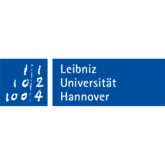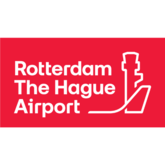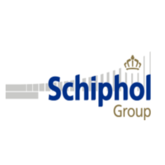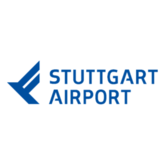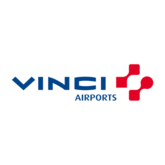Project description
In the near future, hydrogen will be a solution to decarbonise short- and medium-haul aviation.
The EU-funded GOLIAT project brings together aircraft manufacturers (Airbus,) technology providers (H2FLY, Chart Industries), research institutions (TU Delft, Leibniz University Hannover), and airport operators (Vinci Airports, Schiphol Airport, Rotterdam Airport, Stuttgart Airport, Budapest Airport) to enable widespread use of hydrogen at airports by:
- Developing and demonstrating liquid hydrogen (LH2) refuelling technologies scaled-up for future large commercial aircraft.
- Demonstrating small-scale liquid hydrogen aircraft ground operations at international airports.
- Developing the standardisation and certification framework of future liquid hydrogen operations.
- Assessing the sizing and economics of hydrogen value chains for airports.
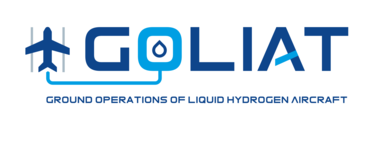
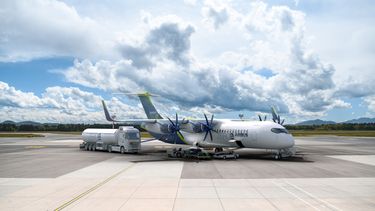
Learn more about the publications and public deliverables via CORDIS-EU Research results here.
Follow the project on LinkedIn.
Obstacles to the widespread use of hydrogen at airports
CHALLENGE
The urge to decarbonise our economy and to develop Europe’s energy independence is leading to a major trend in favour of hydrogen for mobility and stationary applications. In the mid-term, hydrogen will be crucial for the advancement of low-carbon aviation operations.
Various companies, like H2FLY, have announced plans to market fuel cell-based hydrogen powertrains for retrofit on existing regional aircraft. Airbus, through its ZEROe strategy, plans to put on the market the first short- to medium-haul hydrogen aircraft by 2035. Despite these developments, airport infrastructure and operations are a blind spot in the hydrogen research and innovation strategy.
In this context, GOLIAT seeks to overcome the current obstacles to the widespread deployment of hydrogen at airports, namely:
- The limited capacity, performance and cost effectiveness of existing LH2 technologies for the aviation market.
- The absence of an operational, regulatory, economic, and safety framework.
Developing new LH2 technologies
SOLUTION
GOLIAT will develop and demonstrate LH2 refuelling technologies scaled-up for future large commercial aircraft, including:
- A ground-based, high-performance LH2 refueller.
- An aircraft-based LH2 refuelling system, and in particular an aircraft-based refuel coupling enabling the transfer of large quantities of LH2.
The project will also demonstrate the ground operations (parking, ground handling, refuelling, manoeuvring) of a small LH2-powered aircraft (HY4) at three different European airports (Stuttgart, Rotterdam, Lyon) with varying capacities and characteristics.
Finally, GOLIAT will develop the standardisation and certification framework of future liquid hydrogen operations and assess the sizing and economics of hydrogen value chains for airports.
GOLIAT’s impact
BENEFITS
In the medium term, the project is expected to produce in the following results:
- Innovative ground-based refuelling and supply systems for liquid hydrogen at air transport ground infrastructures, with the potential to be up-scaled at system level by 2027
- Transformative aircraft-based hydrogen refuelling technologies, with emphasis on safety, standardisation and scalability to various types of aircraft concepts.
- Demonstration of hydrogen-powered aircraft ground operations, scalable across airports of different sizes, locations and capacities in Europe.
- Comprehensive and validated liquid hydrogen demand and supply-matching models at air transport ground infrastructures in Europe and globally, towards a potential entry into service of hydrogen aircraft by 2035.
- New standards and certification procedures for the roll-out of the new technologies and solutions at large scale, in EU Member States/Associated countries and on the TEN-T network.
More broadly, GOLIAT will de-risk the introduction of future large hydrogen-powered commercial aircraft from 2035, which has the potential to greatly reduce CO2 emissions from air transport. By developing the next-generation of LH2 refuellers tailored for aviation, GOLIAT will also bring a major competitive edge to European industry. Finally, though its airport ground operations demonstrations, GOLIAT will contribute to the social acceptance of LH2 for aviation and other applications.
Funding bodies
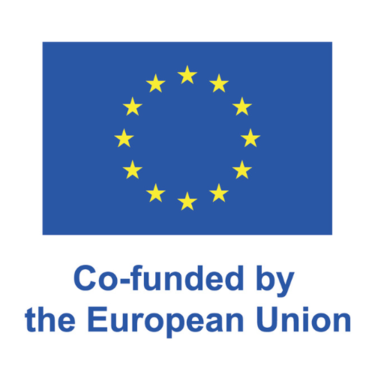 |
 |
Dissemination activities
- October 2024 | 14th EASN International Conference: Main technical challenges and economics of direct high-flow LH2 refueling (Airbus, Leibniz University Hannover)
- October 2024 | 2nd Hydrogen Airports Conference: Prepare the hydrogen and airport ecosystems for the arrival of zero emission aircraft (Vinci)
- September 2025 | European Fuel Cells and Hydrogen Conference
- Impact of GH2 infrastructure and market development on optimal LH2 supply strategies for aviation (Leibniz University Hannover)
- Scenarios for operational and techno-economic analysis of the hydrogen value chain for aviation (TU Delft, Leibniz University Hannover)
- September 2025 | 3rd Hydrogen Airports Conference: LH2 refuelling challenges and airport master planning (Airbus, Vinci)
- October 2025 | 15th EASN International Conference: A study on the potential of hydrogen tankering in the design and operation of an air transport system with first generation hydrogen-powered aircraft (poster – Tu Delft)
Co-funded by the European Union. Views and opinions expressed are, however, those of the author(s) only and do not necessarily reflect those of the European Union or CINEA. Neither the European Union nor the granting authority can be held responsible for them.
Downloadable resources
Project launch PR
Innovative Aviation Liquid Hydrogen Project Launched
Public deliverables
Scenarios for Techno-Economic Analysis
Feasibility study for LH2 aircraft ground operations at airports across Europe
Partner descriptions

The GOLIAT project partners
Project factsheet

GOLIAT Factsheet
Newsletter

GOLIAT Newsletter #1 - October 2025
- Project launch PR
- Public deliverables
- Partner descriptions
- Project factsheet
- Newsletter
Innovative Aviation Liquid Hydrogen Project Launched
Scenarios for Techno-Economic Analysis
Feasibility study for LH2 aircraft ground operations at airports across Europe

The GOLIAT project partners

GOLIAT Factsheet





